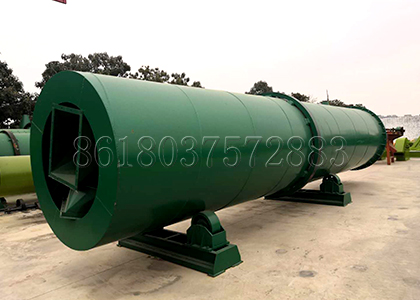With the development of economy, the agricultural industry is also developing, driving the development of some agricultural equipment. The dryer of organic fertilizer production line is one of them. The rotary drum dryer has reasonable design, excellent production performance, advanced technology, high output and small floor area.

The technology and adaptability of bio organic fertilizer dryer are constantly improved.
The dryer with electricity as fuel has environmental protection technology. The smaller, the more uniform. This is a better dryer. Fuel makes fuel fuller and dry material better. But in this case, the cost of fuel will increase. Therefore, some customers add the quality of this coal to some inferior coal, which can reduce the investment cost. However, in this case, the temperature in the machine will fluctuate and uneven, which will affect the quality of the dried material and achieve the desired effect, so it is not worth paying for this.
But we have to add inferior coal. Experts said that some inferior coal can be added to high-quality coal, but not too much, so the consequences are not obvious and fuel costs can be saved. Therefore, the use of coal as fuel drying equipment, the correct use of coal will produce unexpected results.
Rotary drum dryer is a special drying equipment with high moisture content, high viscosity, high water holding capacity and low calorific value specially designed for NPK fertilizer production process. The internal structure of the dryer has been specially designed, which not only improves the thermal efficiency, but also has the advantages of simple process design, low investment and operation cost. It is more suitable for users who need long-term storage of the granules treated by drum granulator
Increasing the inlet air temperature of the dryer can improve the thermal efficiency of the dryer, and the inlet air temperature is limited by the allowable temperature of the product. In the parallel flow particle suspension dryer, the surface temperature of the particles is low, so the inlet temperature of the drying equipment may be much higher than the allowable temperature of the product.
More details go here.

